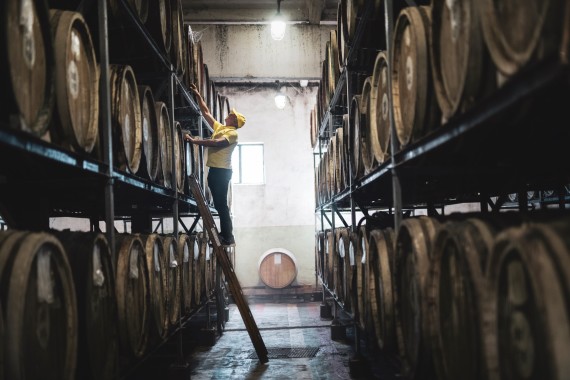Definitions are important. If it walks like a duck and quacks like a duck, it won’t make a good guard dog, no matter what the breeder says. Whisky’s no different, and in the EU and UK its definition is closely regulated. It must be a distillation of a mash made from malted cereals, it must have a minimum abv of 40%, only water and caramel colouring may be added to the final distillate, and that distillate must be aged for at least three years in wooden casks.
That number of three years is significant. It’s an appropriate minimum when maturing in the cool climates of Scotland and Ireland to protect the consumer by ensuring no chancers are rushing anything too young to the market, and so it became enshrined in EU law. But the whisky category has evolved, and whiskies produced in a variety of hot climates are now commonplace. Should these definitions be updated to reflect the modern landscape?
“There's definitely an argument to look at these laws and think about what’s right for global whisky and not just the northern latitudes,” says Dawn Davies MW, head buyer for The Whisky Exchange.
“In the rum world, we’re used to hearing people saying that it ages three times quicker than in Scotland. It’s not ageing quicker but it’s taking on flavour faster because of that rapid exchange between the wood and the liquid because of that heat. Sometimes the case might be that if you have the liquid in wood for three years then the wood would dominate.
“In some bourbons and American whiskies, there’s a natural sweetness from the corn and there can be a very mature flavour for something that’s very young. We’re getting these products that are much more ready to drink and have all the character of a whisky at a younger age.
“In colder climates like Scotland, it takes longer for those spirits to take on the flavour, so I understand the minimum ageing rule in Scotland. When those laws were put in place you weren’t seeing all this amazing array of whisky from all over the world.”
Speaking to Drinks International in 2022, Indian premium single malt brand Paul John – which matures in Goa where summer temperatures often reach 40°C (104°F) – revealed that annual angel’s share can be 10%, five times more than Scotland and double Kentucky, ageing for too long just to make a smaller quantity of over-extracted and tannic whisky doesn’t make sense.
Age statements
In India, no-age statement whiskies have become the norm but must be at least three years old to be called whisky in Europe. That’s not only less than ideal for a region that has taken inspiration for its single malt category directly from Scotland, where age statements are so often the benchmark for quality and price, but also gives producers very little room to play at the younger end of the stylistic range.
“The real problem is that people are ageing a product for too long to hit those minimum ages so they can import into some of the biggest whisky-drinking countries in the world, and that’s where we are missing out on potentially great liquid,” says Davies.
“Whiskey Del Bac in Arizona, they’re not even hitting three years, they’re more around 24 months but the liquid is some of the best I’ve tasted from America in my life. I can’t sell it in the UK because it wouldn’t sell if it’s not called whiskey. We don’t really have a term for something that’s not whiskey – it’s not moonshine, it’s an aged spirit. We’re talking with them about producing a whiskey that’s aged for three years, just so I can have something, but is that whiskey then going to be better? I don't know because it's pretty damn good as it is now.”
Standards are important for whisky. Consumers have a reasonable expectation that a bottle labelled whisky should taste like a whisky, but that becomes more complicated when a two-year-old whiskey from the Sonoran Desert in Arizona fits that brief.
“There is also the argument that it stops people just churning out stuff that's not ready to be drinking,” says Davies. “I'm tasting a lot of Asian whiskies at the moment and some of them are very young and very raw. They’re three years old and they’re still raw, they’re not old enough. The sweet spot is going to change from distillery to distillery but it’s very frustrating to find something amazing that you can’t share with the world.
“When you find great liquid, you find great liquid, and you want that quality to be shared with the world. From my perspective, that’s why I do my job. I want to bring people the best liquid that I can find, and I think it’s super sad that I can’t bring something to the table that's just so good.
“We have to move with the times and the times are changing. As an industry, we cannot stand still. Look at climate change for example, that’s going to affect how certain types of places in the world can produce through the level of heat they’re getting in summer months. I’m not saying we should move the minimum age of all whisky to two years, but maybe we should challenge the idea that three is right for everyone in the world.”




